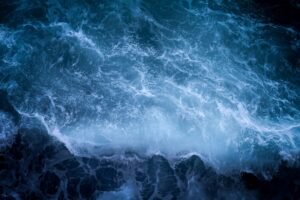Titania is the largest moon of Uranus, the seventh planet from the Sun. It was discovered by William Herschel in 1787 and is named after the queen of the fairies in William Shakespeare’s play “A Midsummer Night’s Dream.” Titania is one of the five major moons of Uranus, along with Oberon, Umbriel, Ariel, and Miranda. It is a fascinating celestial body that has captured the interest of astronomers and space enthusiasts alike. With its unique physical characteristics, surface features, and potential for future exploration, Titania offers a wealth of information about the formation and evolution of planetary moons.
Key Takeaways
- Titania is the largest moon of Uranus and the eighth largest moon in the solar system.
- It has a heavily cratered surface with a variety of geological features, including canyons and faults.
- Scientists believe Titania formed from the accretion of material in the early solar system, possibly through a process called “catastrophic disruption.”
- Titania’s relationship with Uranus has led to tidal heating, which may have contributed to its geological features.
- Future exploration of Titania could provide valuable insights into the formation and evolution of planetary moons, as well as the history of the solar system.
Titania’s physical characteristics
Titania has a diameter of about 1,578 kilometers, making it the eighth largest moon in the solar system. It is composed primarily of water ice with a small amount of rock, and its surface is heavily cratered, indicating a long history of impacts. The moon has a relatively low density, suggesting that it may have a substantial amount of water ice in its interior. Titania’s surface is also marked by a system of large faults and scarps, which are thought to have formed as a result of tectonic activity. The moon’s surface is dark and reddish in color, likely due to the presence of organic compounds that have been irradiated by solar ultraviolet radiation. Titania’s surface temperature is estimated to be around -200 degrees Celsius, making it one of the coldest objects in the solar system.
Titania’s physical characteristics make it a particularly interesting object of study for planetary scientists. Its composition and surface features provide valuable insights into the processes that have shaped the moon over billions of years. By studying Titania’s geology and internal structure, scientists can gain a better understanding of the conditions that existed in the early solar system and the mechanisms that govern the evolution of planetary bodies.
Titania’s surface features
Titania’s surface is characterized by a variety of geological features, including impact craters, canyons, and ridges. The largest crater on Titania, Gertrude, is about 326 kilometers in diameter and is surrounded by a bright ejecta blanket. The moon also has several prominent canyons, such as Messina Chasmata and Ursula Chasmata, which are thought to have formed as a result of tectonic forces acting on the moon’s icy crust. In addition, Titania’s surface is marked by numerous ridges and scarps that are believed to be the result of compressional tectonic forces.
The diverse surface features on Titania provide important clues about the moon’s geological history and the processes that have shaped its surface. By studying the distribution and characteristics of impact craters, canyons, and ridges, scientists can gain insights into the frequency and intensity of geological activity on Titania. This information can help to unravel the moon’s past and shed light on the forces that have influenced its evolution over time.
Theories about Titania’s formation
| Theories | Description |
|---|---|
| Accretion from the protoplanetary disk | Titania formed from the accumulation of solid materials in the protoplanetary disk around Uranus. |
| Giant impact hypothesis | Some scientists propose that Titania was formed from the debris of a giant impact between Uranus and a large body. |
| Collisions and mergers | It is suggested that Titania’s formation involved multiple collisions and mergers of smaller bodies in the early solar system. |
There are several theories about the formation of Titania, but the most widely accepted one suggests that it formed from the accretion of material in the early solar system. According to this theory, Titania was created from the debris left over from the formation of Uranus. As the planetesimal that would become Titania grew larger, it began to accumulate more material through collisions with other objects in its vicinity. Over time, these collisions led to the formation of a spherical body with enough mass to gravitationally attract more material and become a moon.
Another theory proposes that Titania may have formed as a result of a giant impact between Uranus and another large object early in the solar system’s history. This impact would have ejected material from Uranus into orbit around the planet, where it eventually coalesced to form Titania and other moons. While this theory is less widely accepted than the accretion model, it remains an intriguing possibility that could help to explain some of the unique characteristics of Titania and its sister moons.
Titania’s relationship with Uranus
Titania orbits Uranus at a distance of about 435,000 kilometers and takes approximately 8.7 days to complete one orbit. Its orbit is nearly circular and lies in the equatorial plane of Uranus, which is unusual for a moon of its size. This alignment suggests that Titania may have been affected by tidal forces from Uranus early in its history, which could have caused its orbit to become more circular over time.
The gravitational interaction between Titania and Uranus has also led to some interesting phenomena on the moon’s surface. For example, tidal forces from Uranus may have contributed to the formation of the moon’s system of faults and scarps by causing its icy crust to flex and crack. In addition, these forces may have played a role in shaping Titania’s overall geology and surface features.
Potential for future exploration

Despite its intriguing characteristics, Titania has been relatively unexplored compared to other moons in the solar system. However, there is growing interest in studying this enigmatic moon further, and several potential missions have been proposed to explore its surface and interior. These missions could provide valuable data about Titania’s composition, geology, and history, shedding light on its formation and evolution.
One proposed mission, known as the Uranus Orbiter and Probe, aims to send a spacecraft to study Uranus and its moons up close. This mission would provide an unprecedented opportunity to explore Titania and other moons in detail, potentially answering many long-standing questions about their origins and characteristics. Another proposed mission, called the Uranus Pathfinder, seeks to send a robotic lander to explore the surface of Titania directly. Such a mission could provide valuable insights into the moon’s geology and surface processes, helping scientists to better understand its history and evolution.
Implications for understanding planetary moons
Studying Titania has important implications for understanding planetary moons in general. By examining its composition, geology, and history, scientists can gain insights into the processes that have shaped moons throughout the solar system. This information can help to unravel the mysteries of moon formation and evolution, shedding light on the conditions that existed in the early solar system and the forces that have influenced planetary bodies over time.
In addition, studying Titania can provide valuable information about the potential habitability of icy moons in our solar system and beyond. Many moons in the outer solar system are thought to have subsurface oceans of liquid water, which could harbor life. By studying Titania’s composition and internal structure, scientists can gain insights into the conditions that may exist within these subsurface oceans and assess their potential for supporting life.
In conclusion, Titania is a fascinating moon with unique physical characteristics, surface features, and potential for future exploration. By studying this enigmatic celestial body, scientists can gain valuable insights into the formation and evolution of planetary moons, as well as their potential for supporting life. As interest in exploring Titania continues to grow, it is likely that many more discoveries await us in the years to come.
In a recent article on Just Tidings, the passing of Joyce Randolph, the last surviving cast member of “The Honeymooners,” serves as a poignant reminder of the passage of time. Similarly, as we explore the mysteries of Saturn’s moon, Titania, we are reminded of the vastness and complexity of our universe. Just as Joyce Randolph’s legacy lives on through her work, so too does Titania’s enigmatic nature continue to captivate and inspire us.




















+ There are no comments
Add yours